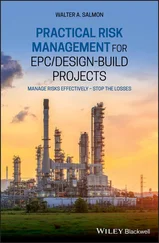8 Part 4: Steering the Ship: Managing Your Project to Success Chapter 14: Tracking Progress and Maintaining Control Holding On to the Reins: Monitoring and Controlling Establishing Project Management Information Systems Putting Your Control Process into Action Reacting Responsibly When Changes Are Requested Relating This Chapter to the PMP Exam and PMBOK 7 Chapter 15: Keeping Everyone Informed I Meant What I Said and I Said What I Meant: Successful Communication Basics Choosing the Appropriate Medium for Project Communication Preparing a Written Project Progress Report Holding Key Project Meetings Preparing a Project Communications Management Plan Relating This Chapter to the PMP Exam and PMBOK 7 Chapter 16: Encouraging Peak Performance by Providing Effective Leadership Exploring the Differences between Leadership and Management Recognizing the Traits People Look for in a Leader Developing Personal Power and Influence You Can Do It! Creating and Sustaining Team Member Motivation Leading a Diverse, Equitable, and Inclusive Project Team Relating This Chapter to the PMP Exam and PMBOK 7 Chapter 17: Bringing Your Project to Closure Staying the Course to Completion Handling Administrative Issues Providing a Smooth Transition for Team Members Surveying the Results: The Project Retrospective Evaluation Relating This Chapter to the PMP Exam and PMBOK 7
9 Part 5: Taking Your Project Management to the Next Level Chapter 18: Using Newer Methods and Resources to Enhance Your Project Management Taking a Look at the Agile Approach to Project Management Using Computer Software Effectively Using Social Media to Enhance Project Management Relating This Chapter to the PMP Exam and PMBOK 7 Chapter 19: Monitoring Project Performance with Earned Value Management Defining Earned Value Management The How-To: Applying Earned Value Management to Your Project Determining a Task’s Earned Value Relating This Chapter to the PMP Exam and PMBOK 7
10 Part 6: The Part of Tens Chapter 20: Ten Questions to Ask Yourself as You Plan Your Project What’s the Purpose of Your Project? Whom Do You Need to Involve? What Results Will You Produce? What Constraints Must You Satisfy? What Assumptions Are You Making? What Work Has to Be Done? When Does Each Activity Start and End? Who Will Perform the Project Work? What Other Resources Do You Need? What Can Go Wrong? Chapter 21: Ten Tips for Being a Better Project Manager Be a “Why” Person Be a “Can Do” Person Think about the Big Picture Think in Detail Assume Cautiously View People as Allies, Not Adversaries Mean What You Say and Say What You Mean Respect Other People Acknowledge Good Performance Be a Manager and a Leader
11 Appendix: Combining the Techniques into Smooth-Flowing Processes Preparing Your Project Plan Controlling Your Project during Performance
12 Index
13 About the Author
14 Connect with Dummies
15 End User License Agreement
1 Chapter 1 TABLE 1-1 Chapter 1 Topics in Relation to the PMP Exam and PMBOK 7
2 Chapter 2 TABLE 2-1 Chapter 2 Topics in Relation to the PMP Exam and PMBOK 7
3 Chapter 3 TABLE 3-1 Chapter 3 Topics in Relation to the PMP Exam and PMBOK 7
4 Chapter 4 TABLE 4-1 Involving Drivers in the Different Project Phases TABLE 4-2 Involving Supporters in the Different Project Phases TABLE 4-3 Involving Observers in the Different Project Phases TABLE 4-4 Chapter 4 Topics in Relation to the PMP Exam and PMBOK 7
5 Chapter 5TABLE 5-1 An Illustration of a Project Objective (Deliverable)TABLE 5-2 Chapter 5 Topics in Relation to the PMP Exam and PMBOK 7
6 Chapter 6TABLE 6-1 Chapter 6 Topics in Relation to the PMP Exam and PMBOK 7
7 Chapter 7TABLE 7-1 Immediate Predecessors for Figure 7-2TABLE 7-2 Activities for Your Picnic at the LakeTABLE 7-3 Predecessor Relationships for Your PicnicTABLE 7-4 Chapter 7 Topics in Relation to the PMP Exam and PMBOK 7
8 Chapter 8TABLE 8-1 Person-Hours Available for Project WorkTABLE 8-2 Planned Duration and Work Effort for Three ActivitiesTABLE 8-3 Chapter 8 Topics in Relation to the PMP Exam and PMBOK 7
9 Chapter 9TABLE 9-1 Chapter 9 Topics in Relation to the PMP Exam and PMBOK 7
10 Chapter 10TABLE 10-1 Risk Factors That May Arise during Your Project’s EvolutionTABLE 10-2 Risk Factors Related to Different Parts of Your Project PlanTABLE 10-3 A Portion of a Risk Management PlanTABLE 10-4 Chapter 10 Topics in Relation to the PMP Exam and PMBOK 7
11 Chapter 11TABLE 11-1 Chapter 11 Topics in Relation to the PMP Exam and PMBOK 7
12 Chapter 12TABLE 12-1 Situations and Issues Suggested in Figure 12-1TABLE 12-2 Chapter 12 Topics in Relation to the PMP Exam and PMBOK 7
13 Chapter 13TABLE 13-1 Chapter 13 Topics in Relation to the PMP Exam and PMBOK 7
14 Chapter 14TABLE 14-1 Chapter 14 Topics in Relation to the PMP Exam and PMBOK 7
15 Chapter 15TABLE 15-1 Chapter 15 Topics in Relation to the PMP Exam and PMBOK 7
16 Chapter 16TABLE 16-1 Comparison of Leadership and Management Approaches in the Project Lif...TABLE 16-2 Chapter 16 Topics in Relation to the PMP Exam and PMBOK 7
17 Chapter 17TABLE 17-1 Chapter 17 Topics in Relation to the PMP Exam and PMBOK 7
18 Chapter 18TABLE 18-1 Manifesto for Agile Software DevelopmentTABLE 18-2 Selected Characteristics of the Waterfall and Agile Project Managemen...TABLE 18-3 Helping Your Software Support YouTABLE 18-4 Using Social Media to Support Your Project Management in Its Differen...TABLE 18-5 Chapter 18 Topics in Relation to the PMP Exam and PMBOK 7
19 Chapter 19TABLE 19-1 Interpretations of Cost and Schedule VariancesTABLE 19-2 Interpretations of Cost and Schedule Performance IndexesTABLE 19-3 Plan for Specialized to Produce Prototypes A and BTABLE 19-4 Project Status as of March 31TABLE 19-5 Performance Analysis SummaryTABLE 19-6 Chapter 19 Topics in Relation to the PMP Exam and PMBOK 7
1 Chapter 1FIGURE 1-1: The relationship between the three main components of a project. FIGURE 1-2: Mapping principles, phases, and knowledge areas to performance doma...
2 Chapter 3FIGURE 3-1: The steps in Stage 1 of a project’s life cycle (starting the projec...FIGURE 3-2: The tangible and intangible benefits of tailoring a project. FIGURE 3-3: Tailoring for the project can include and be influenced by one or m...
3 Chapter 4FIGURE 4-1: The beginning of a sample stakeholder register for an annual blood ...FIGURE 4-2: A sample stakeholder register format. FIGURE 4-3: Involving stakeholders with different levels of power and interest ...
4 Chapter 5FIGURE 5-1: A sample scope statement.
5 Chapter 6FIGURE 6-1: Developing a work breakdown structure. FIGURE 6-2: The hierarchy of deliverables and activities for surveying people t...FIGURE 6-3: A product component scheme for a WBS for preparing to open a commun...FIGURE 6-4: A functional scheme for a WBS for preparing to open a community-bas...FIGURE 6-5: A useful scheme for identifying your WBS components. FIGURE 6-6: The components of an activity code. FIGURE 6-7: Drawing your WBS in the organization-chart format. FIGURE 6-8: Drawing your WBS in the indented-outline format. FIGURE 6-9: Drawing your WBS in the combined organization-chart and indented-ou...FIGURE 6-10: Drawing your WBS in the bubble-chart format.
6 Chapter 7FIGURE 7-1: The three symbols in an activity-on-node network diagram. FIGURE 7-2: An example of a network diagram. FIGURE 7-3: An example of a network diagram with earliest and latest start and ...FIGURE 7-4: Starting your picnic-at-the-lake network diagram. FIGURE 7-5: Continuing your picnic-at-the-lake network diagram. FIGURE 7-6: The completed picnic-at-the-lake network diagram. FIGURE 7-7: Getting gas at the full-service island and cash at the nearby ATM. FIGURE 7-8: Making sandwiches while driving to the lake. FIGURE 7-9: Getting gas at the full-service island while getting cash at the ne...FIGURE 7-10: Getting to your picnic at the lake in 45 minutes. FIGURE 7-11: Representing your picnic-at-the-lake schedule in a combined milest...FIGURE 7-12: Representing your picnic-at-the-lake schedule in a combined WBS, r...FIGURE 7-13: Representing your picnic-at-the-lake schedule in an Interface Gant...
Читать дальше












